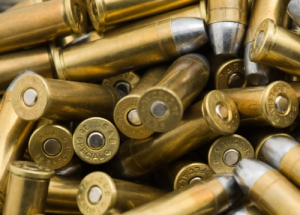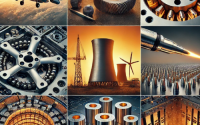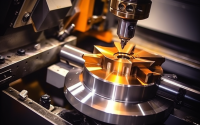Tungsten Penetrators vs. Alternative Materials
Introduction
The world of armor-piercing munitions employs an array of materials for armored targets. Among these, tungsten penetrators stand as a symbol of sheer kinetic energy and precision engineering.

However, the world of the ideal armor-penetrating material has various alternatives. Each of them has its own set of advantages and limitations. Let’s delve into a comparative exploration of tungsten penetrators against alternative armor-piercing materials.
What Are Tungsten Penetrators?
Tungsten penetrators are components used in armor-piercing ammunition and military projectiles. They serve as kinetic energy penetrators due to tungsten’s exceptional hardness and density.
These penetrators typically take the form of rods or cores. They concentrate a tremendous amount of kinetic energy into a small area upon impact. Thus, they can aim to breach or penetrate armored targets by concentrating
The high density and hardness of tungsten make it ideal for this purpose. When such a projectile strikes an armored surface, the kinetic energy is focused on a small point. So, it can puncture through the armor.
This technology is widely utilized in anti-tank rounds and other military applications where defeating armored targets is necessary.
Different Types of Tungsten Penetrators
Penetrators come in various types. Each of them applies to specific applications and materials. Here are a few common types:
- Kinetic Energy Penetrators (KEP): These are solid, high-density projectiles designed to pierce armor. They concentrate kinetic energy at the point of impact. They’re often made from materials like tungsten, depleted uranium, or steel.
- Chemical Energy Penetrators: These penetrators use chemical reactions upon impact to breach armor. High explosive anti-tank (HEAT) rounds are an example. They have a shaped charge. So, they form a high-velocity jet of molten metal that penetrates the target.
- Composite Penetrators: These combine different materials or technologies to maximize penetration capabilities. They might include layers of materials like ceramics, metals, or polymers to enhance penetration performance.
- Explosively Formed Penetrators (EFPs): These penetrators use explosives to shape a metal liner into a projectile upon detonation. The resulting high-velocity projectile can penetrate armor effectively.
- Sabot Rounds: These rounds use a lightweight carrier (sabot) that falls away upon firing. So, a denser penetrator can travel at high velocities towards the target. This design maximizes velocity and penetration power.
The Dominance of Tungsten Penetrators
Tungsten penetrators harness exceptional properties to redefine the effectiveness of modern armor-piercing systems. Their unique characteristics enable enhanced penetration capabilities.
–Strengths of Tungsten:
- Unmatched Density and Hardness: Tungsten’s exceptional density and hardness empower penetrators with immense kinetic energy. So, they enable deep armor penetration.
- Precision Engineering: Aerodynamic design ensures stability and accuracy. These designs optimize impact for maximum penetration efficiency.
- Military Significance: Tungsten finds common uses in military arsenals due to its effectiveness against armored targets. So, they have become a cornerstone of defense strategies.
Related reading: Tungsten Penetrators: The Cutting Edge Of Armor-Piercing Technology
–Shortcomings of Tungsten:
- Cost and Availability: Limited availability and high production costs pose challenges in widespread deployment across military inventories.
- Environmental Impact: Mining and refining tungsten can have adverse environmental consequences. They also raise sustainability concerns.
Contrasting Alternatives in Armor-Piercing Materials
In the realm of armor-piercing materials, contrasting choices emerge.
–Depleted Uranium (DU):
- Advantages: Depleted uranium (DU) possesses high density and effectiveness against heavy armor. Besides, they are relatively abundant in military stockpiles.
- Limitations: Radioactive properties raise concerns about environmental and health hazards, leading to international restrictions.
–Steel and Alloys:
- Advantages: Such penetrators are widely available and cost-effective. Thus, there are many armor-piercing projectiles made from them.
- Limitations: They have lower density compared to tungsten, which limits penetration capabilities against heavy armor.
–Ceramic Composites:
- Advantages: These lightweight penetrators come with excellent hardness. They provide effective protection against specific projectiles.
- Limitations: They are vulnerable to shattering upon impact. They potentially reduce overall durability and effectiveness.
Conclusion: Balancing Tactical Efficacy and Constraints
The choice of armor-piercing material isn’t straightforward. It’s a delicate equilibrium between effectiveness, cost, environmental impact, and tactical necessities in diverse military scenarios.
While tungsten penetrators demonstrate unparalleled armor-penetrating capabilities, the alternatives present a range of materials with their own set of advantages and limitations.
At Advanced Refractory Metals (ARM), we stand as a premier supplier of top-quality Tungsten products. Our commitment extends to competitive pricing and efficient lead times for all our materials. For more information, please check our website.



